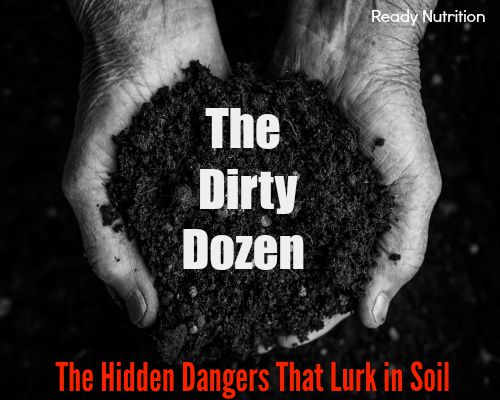
Firstly, dirt is “dirty” because of the number of activities that are going on in it…important activities that the environment depends upon for the ecological and hydrological cycles that govern life on the planet. When I mention activities, this stresses biological activities in particular. Plant roots, vegetable material, and animal activities contribute to this biological arena in the forms of waste matter and decaying matter due to death and biodegradable actions.
What Makes Soil So Harmful?
The soil has variables such as temperature, pH, mineral actions (such as weathering and erosion), and multiple soil types and compositions. Microorganisms inhabit the spaces fostered within the soil by roots and they also live upon the roots. This space surrounding the plant roots in the soil is referred to as the rhizosphere, and this area breeds microorganisms because it is a nutrient-rich area that favors such growth. Moisture and temperature play vital roles in determining how microorganisms thrive and multiply.
Keep this in mind: these bacteria and fungi that live in soil infect man!
The following list gives examples of the bacteria that thrive in the soil and the list, mind you, is far from exhaustive. The examples are as follows:
- Tetanus (Clostridium tetani) – toxin-producing, anaerobic, spore-bearing Gram positive
- Botulism (Clostridium botulinum) – toxin-producing, anaerobic, spore-bearing Gram positive
- Clostridium perfringens – is ubiquitous/omnipresent in soils, and usually is ingested by humans as a result of fecal-oral transmission
- Anthrax (Bacillus anthracis) – Gram positive spore-forming rod bacteria. Anthrax prefers black/dark soil, due to the rich organic matter and calcium content which are both factors helping it to reproduce. Anthrax is primarily a disease of plant-eating mammals (herbivores).
- Gastroenteritis via Bacillus cereus – normally a food-borne disease, it is found in soils naturally on decaying organic matter, and the spores are transferred to the host usually by ingestion. Spores then re-enter the soil via waste matter from the host.
- Gastroenteritis via Listeria (Listeria monocytogenes) – found in sewage, silage, groundwater, and vegetation. Can withstand numerous changes in pH, temperatures, and salinity. Found in the soil and then spread via ingestion through improper food processing.
- Legionnaire’s disease (Legionella) – found in soil, and especially in potting mixes for plants where the soil comes from varied areas, and introduction into the backyard stimulates growth that would normally not have occurred.
- The soil bacterium Streptomyces is the largest genus of Actinobacteria where over 500 species have been described. This type of bacteria is found mainly in soil and decaying vegetation, most streptomycetes produce spores, and are noted for their distinct, “earthy” odor, which results from the production of a volatile compound, geosmin.
Now for the funguses (fungi) that thrive in soil, as follows:
- Coccidiodomycosis – also known as “valley fever,” and leads to pneumonia, especially community-acquired cases.
- Coccidioides – endemic to southwestern North America in saline, alkaline soils with high temperatures. Dust storms often promote the spread of fungal infections from this organism.
- Blastomyces dermatitidis – is a yeast-type fungus found in eastern North America. Inhalation of dust while digging/excavation is a primary method the organism is introduced to man. Occurs in this area in a wide variety of soil types.
- Sporotrichosis (via Sporothrix schenckii) – found in soils worldwide in soil, vegetation, sphagnum moss, decaying wood, and hay. The method of introduction into the human body is via direct inoculation from the environment (thorns, splinters, cuts, etc.). It may take weeks for the organism to develop into full-blown disease process, after local ulceration and progression to the lymph node system.
How to Prevent Getting Sick From the Dirty Dozen
Wow! That’s quite a good deal of microbes to deal with! We’re not going to go into each individual disease in terms of treatment. Rather, we’re going to mention some good preventative measures that will enable you to keep control of your outdoor situation. Let’s do it!
- Regular hand-washing will help to prevent contamination by germs from the soil and also from objects handled from other people who may have contaminated their hands. Wash your hands thoroughly:
- After using the restroom
- Prior to touching food or handling food utensils
- After eating
- After handling any item that can potentially transfer pathogens
- Regularly during the day (before, during – on a break – of your hike, and after activities)
- Supplement your hand washing with hand-sanitizing gel or fluid. It is supplementary because the handwashing removes the larger particles that the gel may not necessarily penetrate into to kill the bacteria or fungus. Disinfect after handwashing.
- Rigorously maintain personal hygiene, and always have access to the following items:
- A bar of soap and washcloth
- A personal supply of toilet paper – best bet is to keep it in a ziploc bag
- Toothbrush and toothpaste
- Shampoo
- If shower and/or laundry facilities aren’t available, you can use a large tote bin for a basin both for baths and also to wash clothing, provided you have an adequate water supply*
*refer to previous articles on Water Purification and Foodborne Illnesses
- Use foot powder each day, change out your boots each day, and bring antifungal powder or creme with you…the fungus can cling to the dirt on your boots and then strike when your feet are unprotected.
These measures, along with proper food preparation techniques and sanitized camps will enable you to beat the dirt’s potentially deadly denizens: bacteria and fungi. An ounce of prevention is worth a pound of cure, and this piece holds no exceptions.
JJ
